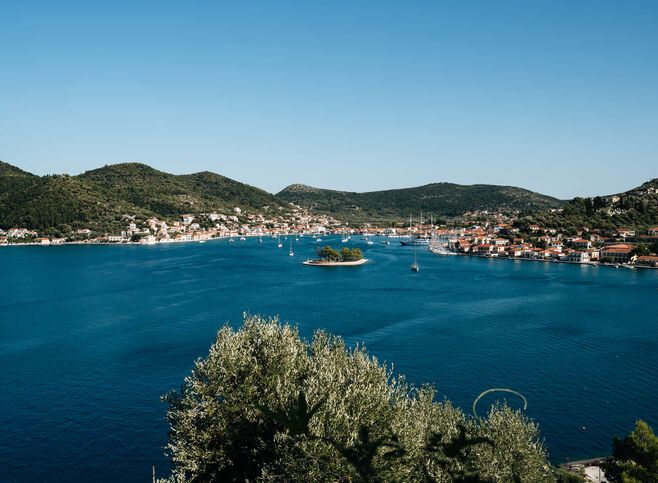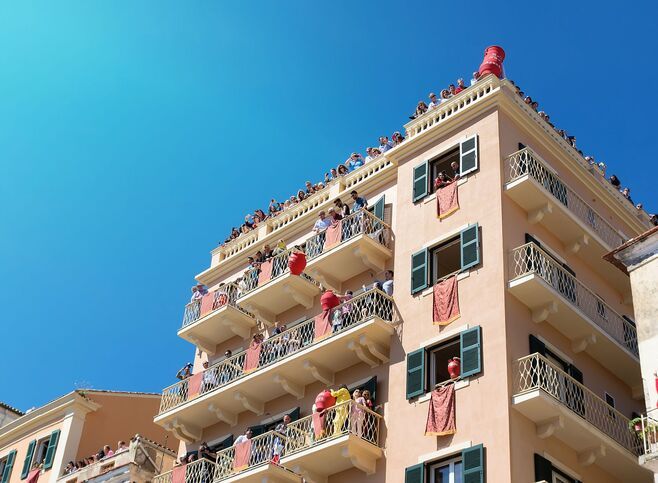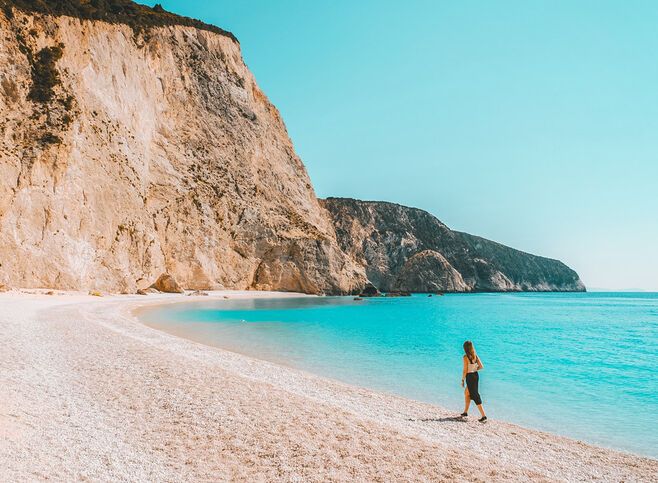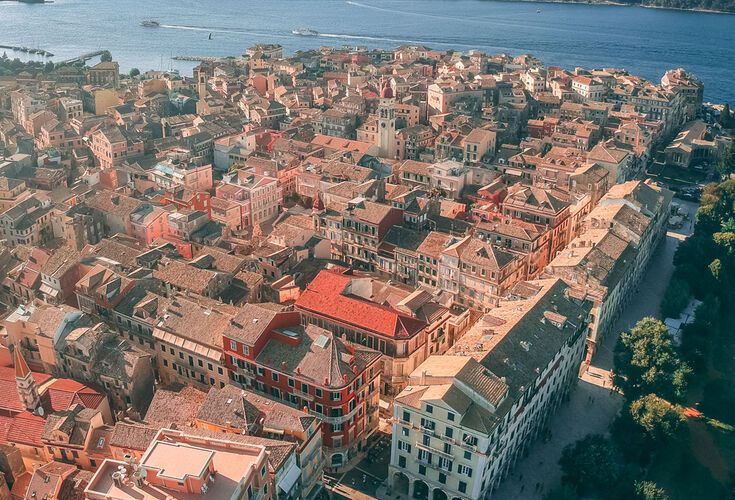- Places to go
- Things to do
- Book your trip
- Get Inspired
- More
- BACK
-
-
Whether you arrive by sailing yacht, speedboat or ferry, you’ll be hooked by the charm of these two small, emerald isles in the Ionian Sea. The white-sanded beaches on both Paxos or Antipaxos (or Paxi and Antipaxi, as they are also known) are legendary and behind them stretch grove upon grove of centuries-old olive trees, dense vineyards and untamed nature spilling down to the water’s edge. Meanwhile, the sunset from the white cliffs of Eremitis has to be seen to be believed and exploring caves and hiking in search of historic cisterns are must-dos. This pair of tiny islands in the Ionian Sea will remain etched in your memory forever.
The main port and capital of Paxos island, Gaios is invisible right up to the last minute as you approach it. It lies at the end of a ‘fjord’ created by the islet of Agios Nikolaos, which suddenly opens up to reveal a fine harbour.
The town, which has held on to its original Venetian layout and architecture, boasts a number of prized possessions, like the old British governor’s mansion and the church of Agii Apostoli with an impressive cistern above it. You’ll love wandering into the old shops and cafes, some unchanged since they first opened at the turn of the last century.
You’ll find peacock-blue translucent water and the whitest of white sand on beaches on both Paxos and Antipaxos. Note these names: Orkos on Paxos, Vrika and Voutoumi on Antipaxos… beaches that should be top of your list amongst all the Ionian Islands.
The castle of Agios Nikolaos on the island of the same name, opposite Paxos’ main port of Gaios, has landmark status. The Venetians began construction on this amazing attraction in 1423 and finished it in 1510. Its secret? It was built from plans prepared by none other than Leonardo da Vinci that are still preserved in the city’s archives. Small world!
Go village-hopping and discover the heartbeat of Paxos
The accommodation possibilities on Paxos are all you could hope for. How does a stone-built luxury home with a private pool and a splendid sea view, hidden away amid lush vegetation, sound for your holiday?
Centuries-old trees blanket Paxos. Gnarled and twisted into amazing shapes, they block out the sun, throwing their dense shade over the entire island. For the locals, these trees are sacred, their lifeblood, and their history goes way back to when the Venetians ruled the Ionian Sea.
At only 3km in length, teeny Antipaxos island (just south of Paxos) would fit most definitions of paradise. A dense forest of mastic, pine, myrtle and cypress trees covers it, interspersed with grapevines. Well worth investigating if you can bear to leave the beach.
Take a boat trip to magical Antipaxos
On an island with little water, rain was so precious on Paxos that the islanders built monumental cisterns to store it. Today, they are considered ingenious works of art and part of Paxos’ cultural heritage.
Sweet and dark, this wine is made from little-known grape varieties like Pheidias and Petrokodrynthos. Production on Antipaxos is on a small scale, so you won’t find it in every bar, but it’s worth tasting, so do seek it out.
This coast of Paxos is a wonderland of white cliffs and grottoes. By boat, you can investigate them all: the caves at Ahai, the vast grotto of Ypapanti, the cliffs at Eremitis beach. You’ll get your biggest surprise at Ortholithos. As its name implies, it’s an enormous rock in the shape of one of Obelix’s menhirs that rises straight out of the water.
Paxos is one of the smallest of the Ionian Islands off the west coast of mainland Greece. It is around 30 nautical miles south of Corfu and just opposite Antipaxos.
Yes, Paxos is also called Paxi (or Paxoi), from the plural of the Paxos in Greek, as it refers to the group of small islands that Paxos is part of. Antipaxos is also known as Antipaxi.
You can reach Paxos by ferry from Igoumenitsa (on the mainland) or Corfu. The crossing from Corfu to Paxos (hydrofoil for passengers only) takes 30mins and from Igoumenitsa (larger ferries for passengers and vehicles) takes 1hr30mins. The nearest airport is on Corfu.
Paxos is known for its small size, green interior and exotic beaches. It has elegant hotels and villas and high-end cuisine, but you will also find traditional villages and food. It is a favourite destination for sailing boats and island-hopping in the Ionian Sea and for those looking for a quieter, more remote destination in Greece.
Antipaxos is just a few nautical miles southeast of Paxos. Passenger ferries make regular crossings from Gaios, the port and main town of Paxos, or you can hire a boat and skipper for the day or take a taxi boat directly to one of Antipaxos’ beaches. There are also day trips to Paxos from the island of Corfu and Syvota (on the mainland).
As two of the smallest Greek islands, Paxos and Antipaxos are excellent choices throughout the summer months. June and September are the quietest times, allowing you to take full advantage of the excellent swimming conditions. The beaches of Antipaxi are popular in July and August.








